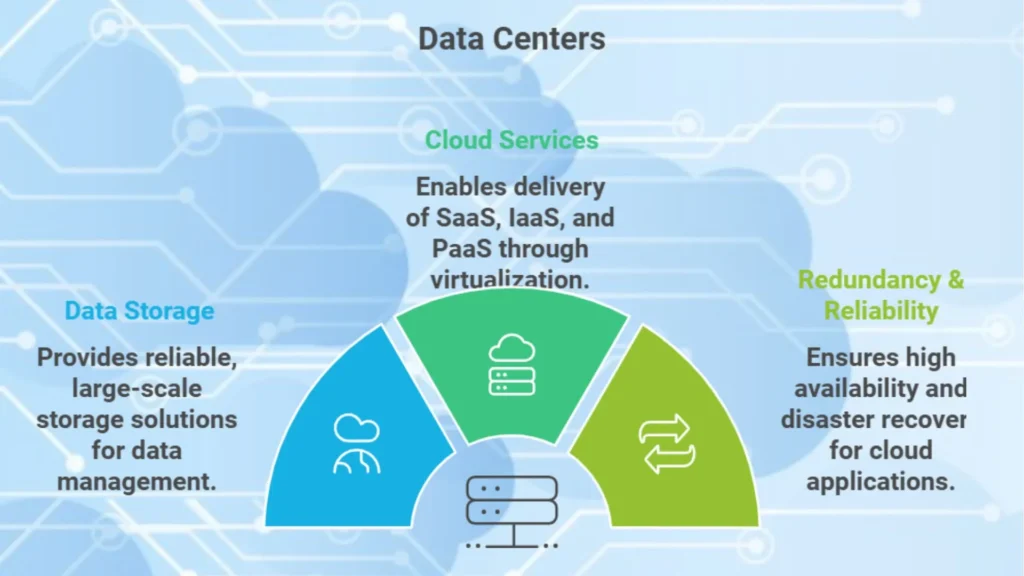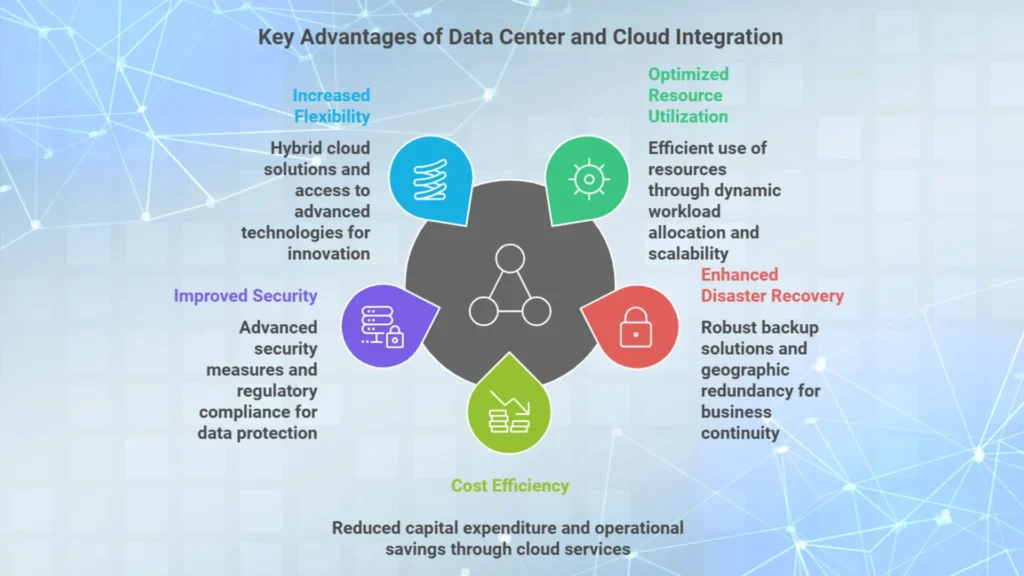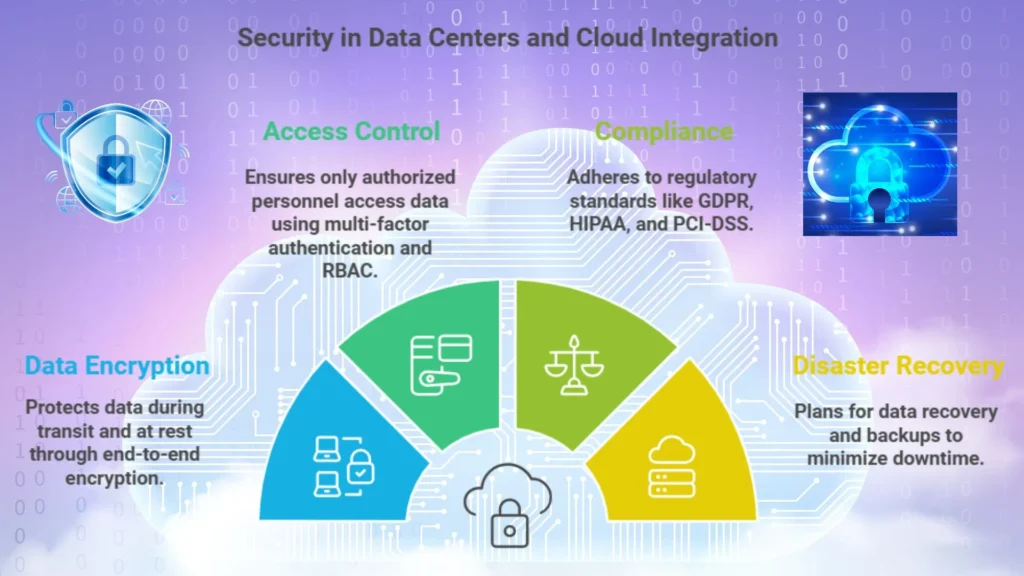In this era where digital transformation is most important, the integration of traditional data centers with cloud computing offers many benefits. This process creates a hybrid environment that combines the best of both the worlds, which enhances flexibility, scalability and performance. This will provide businesses with secure solutions to handle the growing demand for data and computing power.
Here we will explain how data centers support cloud infrastructure, how data centers and cloud integration enhances business scalability and what enterprises need to consider when building secure, reliable IT environments.
The Role of Data Centers in Cloud Infrastructure
Data centers serve as the physical backbone of cloud computing. They house the servers, storage and networking equipment that are necessary to run applications, manage data and process vast amounts of information.
By partnering with cloud providers, businesses can benefit as under:
1. Store and Process Data:
Data centers offer reliable, large scale storage and computational power.
2. Enable Cloud Computing Services:
Through virtualization and networking, data centers allow businesses to deliver cloud services as follows:
3. Provide Redundancy and Reliability:
Most data centers maintain backups and redundant systems to ensure high availability and disaster recovery for cloud applications.

Key Advantages of Data Center and Cloud Integration
Following are the key advantages of Data Centers and Cloud Integration:
1. Optimized Resource Utilization
Dynamic Workloads: By integrating cloud services with data centers, businesses can dynamically allocate workloads between on premises systems and cloud applications. This enhances collaboration and access, thus ensuring optimal utilization of resources and improved performance during peak times.
On-Demand Scalability: With cloud integration, enterprises can scale their storage, computing and networking capacity based on demand, which improves flexibility and cost efficiency.
2. Enhanced Disaster Recovery and Business Continuity
Backup and Recovery: Cloud integration offers strong backup solutions, which ensures that important data is securely stored and can be quickly restored in case of data loss or system failures.
Geographic Redundancy: Cloud services often span multiple geographic locations, which provides additional layers of redundancy and enhances business continuity. This can be optimized by locating data processing close to users, to reduce latency and improve user experience.
3. Cost Efficiency
Reduced Capital Expenditure: By using cloud services, businesses can decrease their capital expenditures on physical hardware and infrastructure.
Operational Savings: The pay-as-you-go model of cloud computing allows businesses to pay only for the resources they use, which optimizes operational expenses.
4. Improved Security and Compliance
Advanced Security Measures: Cloud providers offer strong security features, which includes encryption, access controls and regular security updates. This complements the security measures in traditional data centers.
Regulatory Compliance: Many cloud providers comply with industry specific regulations, which helps businesses to meet legal and compliance requirements for data protection.
5. Increased Flexibility and Innovation
Hybrid Cloud Solutions: Combining data centers with cloud services enables businesses to deploy hybrid cloud solutions, which optimizes workloads and applications based on specific needs.
Access to Advanced Technologies: Cloud integration provides access to cutting edge technologies such as artificial intelligence, machine learning and big data analytics, which brings up innovation. This also allows organizations to deploy new applications quickly, experiment with emerging technologies and respond rapidly to market changes.

Security Considerations for Data Centers and Cloud Integration
Security is a primary concern in data center and cloud integration due to the increased risk of cyberattacks, data breaches and compliance issues. Key security considerations include:
1. Data Encryption:
Data centers and cloud providers implement end-to-end encryption to protect data while in transit or at rest.
2. Access Control:
Multi factor authentication, identity management and role based access control (RBAC) are vital for restricting data access to authorized personnel only.
3. Compliance:
Businesses using cloud solutions must ensure data handling meets regulatory standards, such as GDPR, HIPAA, and PCI-DSS, depending on industry and region.
4. Disaster Recovery:
Data centers integrated with cloud environments should include disaster recovery planning, which includes regular backups to minimize downtime in case of an outage.

Conclusion
Emerging trends in data center and cloud integration, such as edge computing, multi cloud environments and AI driven automation, are shaping the future of IT infrastructure. These trends allow businesses to process data closer to its source. Also, it enables to use multiple cloud providers to avoid vendor lock in and automate routine tasks to increase efficiency.
Data centers and cloud integration are essential to build a flexible and scalable IT infrastructure. By understanding and implementing these solutions, enterprises can optimize operations, improve data security and drive growth in a competitive global market.

